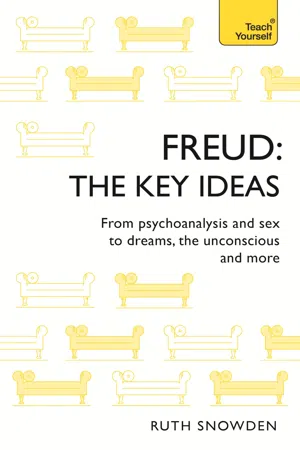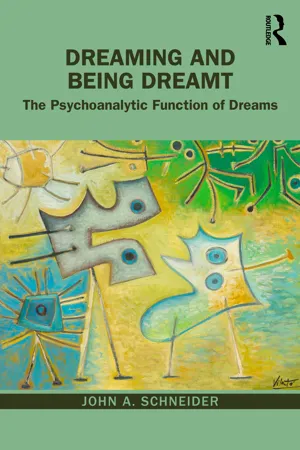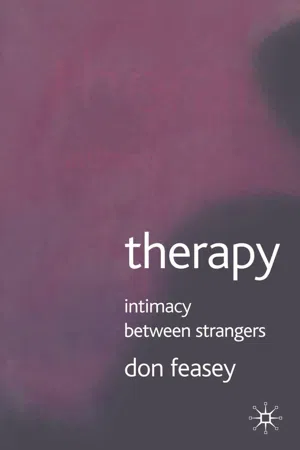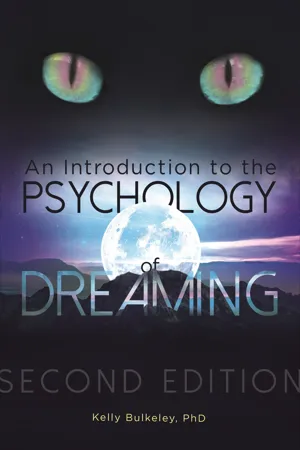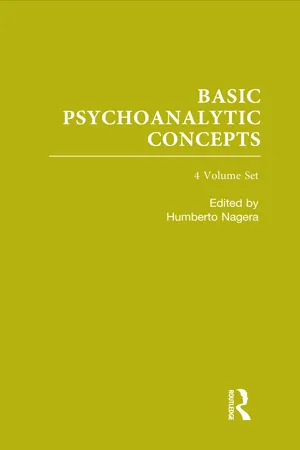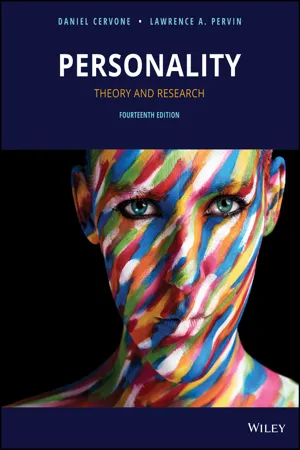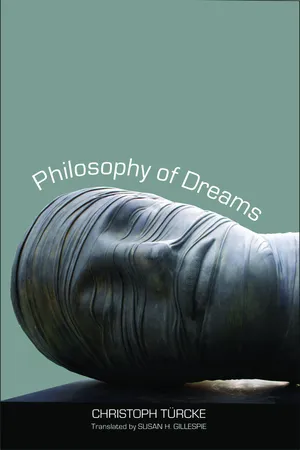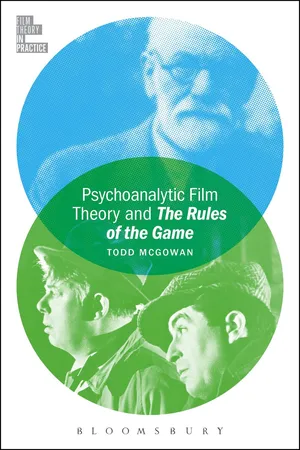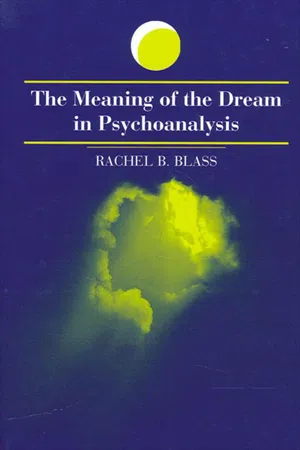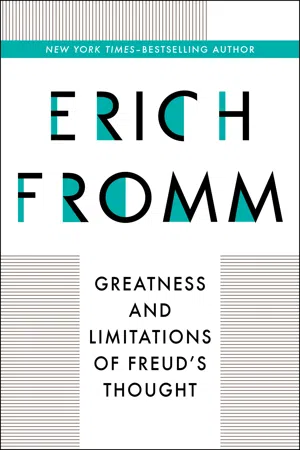Psychology
Freud's Theory of Dreaming
Freud's theory of dreaming posits that dreams are a manifestation of unconscious desires and conflicts. He believed that dreams provide a window into the unconscious mind, allowing repressed thoughts and emotions to surface in symbolic form. According to Freud, the interpretation of dreams can reveal hidden aspects of an individual's psyche and contribute to the understanding of psychological disorders.
Written by Perlego with AI-assistance
Related key terms
1 of 5
12 Key excerpts on "Freud's Theory of Dreaming"
- eBook - ePub
Freud: The Key Ideas
Psychoanalysis, dreams, the unconscious and more
- Ruth Snowden(Author)
- 2017(Publication Date)
- Teach Yourself(Publisher)
Modern psychologists have had a tendency, until recently, to see dreams merely as a kind of information processing – perhaps assimilating ideas about what has happened in waking life and then incorporating this information into memory banks. But dreams can certainly help us to solve ongoing problems, so there was a lot of truth in Freud’s ideas. Recent research has suggested that the areas of the brain which control emotion and motivation are frequently aroused during REM (rapid eye movement) sleep – the phase of sleep when most dreaming occurs – so maybe Freud was not far off the mark. Dreams, as many writers will agree, also unleash creative processes – so the unconscious is not all about repressed and negative impulses as Freud tended to insist. However, the important thing is to recognize that it was Freud who played the biggest part in starting the process that led to the evolution of modern theories about the dreaming mind. For him, the dream is all-important, ‘one of the really deep and formative experiences of our soul’, and so it forms one of the cornerstones of the psychoanalytic process.Focus points✽ Dreams are of central importance in psychoanalysis.✽ Freud saw dreams as wish fulfilments.✽ He said that each dream has both a manifest and a latent content.✽ He identified special mechanisms that prevented the latent content from becoming conscious.✽ Freud believed that much of a dream’s content was disguised by means of symbols.✽ Freud interpreted dreams mainly in two ways – the symbolic method, which explores symbolic meaning, and the decoding method, which uses traditional interpretations.✽ He maintained that most dreams harked back to childhood experiences, particularly sexual ones.Next stepThe next chapter looks at one of the most enduring parts of Freud’s thought: his ideas about the structure and functioning of the human mind. For Freud, these ‘layers’ or ‘spaces’ of the human mind were a useful way to explore and understand the tensions and conflicts that caused human anxiety and unhappiness. - eBook - ePub
Psychology and Freudian Theory
An Introduction
- Paul Kline(Author)
- 2014(Publication Date)
- Routledge(Publisher)
SIX DreamingFrom the discussion of the Freudian theory of dreaming in our theoretical chapter (Chapter 2 ), it will be remembered that the main points were as summarized below.1 Every dream represents a wish fulfilment, an attempt to put aside a disturbance of sleep and is thus a guardian of sleep (Freud 1940). 2 Unconscious wishes (normally repressed by the censor) find expression during sleep. 3 A desire left over from waking life obtains reinforcement during sleep from an unconscious element. There are thus id and ego dreams. 4 The manifest content of a dream is a disguised form of the latent content although day residues must be taken into account. 5 Symbolism is also an important disguise. Symbols for various parts of the body and important human events (birth, copulation, death, to summarize T. S. Eliot) were given. 6 These disguising processes are typical of primary processes. Known as dreamwork, a few have been described in some detail: condensation, displacement, changing into the opposite, trivialization.For all these reasons, Freud described dreams as the royal road to the unconscious. It was ‘the recurrent foundation of psychoanalysis and the field in which every worker must acquire his convictions and seek his training’ (Freud 1909, p. 3).This should leave us in no doubt that the theory of dreams is indeed dealing with something central to psychoanalysis. If it can be shown that Freudian dream theory has some objective empirical support, then there is reason to believe that other parts of the theory could be true, being based upon it. If, however, it turns out that dream theory is mistaken, then it is likely that much of the rest of psychoanalytic theory is false.Before I come to examine the objective evidence a few arguments require clarification.The first point to note is that in principle dream theory is difficult to put to the objective test. This is because the theory is essentially an interpretation of dream material. In most cases, there seems no other way to reach similar conclusions. Thus, independent checks not based on interpretations are difficult to carry out. Symbolism seems an obvious exception since symbolism occurs in art and literature. One possible way of checking interpretations is to compare the dreams of different groups whose unfulfilled wishes are known. This is a logical, if not practicable, solution. - eBook - ePub
Dreaming and Being Dreamt
The Psychoanalytic Function of Dreams
- John A. Schneider(Author)
- 2023(Publication Date)
- Routledge(Publisher)
The state of sleep does not wish to know anything of the external world; it takes no interest in reality, or only so far as abandoning the state of sleep – waking up – is concerned . . . all the essential characteristics of dreams are determined by the conditioning factor of sleep.(Freud, 1915/1957 , p. 234)Dreams, as “guardians of sleep,” serve the psychological function of keeping sleep from being overwhelmed by disturbing thoughts. If repressed infantile wishes exert pressure for access to thinking and are uncensored or poorly disguised, they enter the preconscious in a form that is so disturbing as to wake the person up.Freud does not believe that by dreaming the dreamer does psychological work that helps deal with unsettling emotional experience; rather, he believes that dreaming dissipates the threat of overwhelming anxiety caused by the tension of repressed sexual impulses originating in childhood. This view suggests that human emotional development is driven by instincts (experienced as sexual impulses and their derivatives) and that the taming of sexual tension and expression is the primary developmental force.Freud believed that we dream only in sleep when the freedom of visual representation that comes with diminished censorship and a state of disconnection of the mind from voluntary musculature allow derivatives of the repressed to appear in dreams. The dream safeguards sleep by acting as a safety valve, allowing sleep to continue by letting off just enough tension from unconscious drives. If too much libidinal or aggressive energy is released, the capacity for symbol formation through dreaming is exceeded. When unconscious tension builds to such intensity, it wakes the person up. Pressure is transferred from one part of the mind to the other, but the underlying emotional tension continues to exist unless and until the analyst makes an interpretation that helps to resolve the unconscious conflict to which it has given rise. The work being done during dreaming alone is limited to monitoring and regulating the “return of the repressed.” 3 - eBook - PDF
Therapy
Intimacy Between Strangers
- Don Feasey(Author)
- 2017(Publication Date)
- Bloomsbury Academic(Publisher)
The Unconscious: Dreams, the Imagination and Fantasy We are such stuff as dreams are made of, and our little life is rounded with a sleep. ( The Tempest , IV .i.156) Michael Jacobs quotes these words from Sigmund Freud in his recent study of him: the assumption that there are unconscious mental processes, the recognition of the theory of resistance and repression, the appreciation of the importance of sexuality and of the Oedipus complex – these constitute the principle subject matter of psychoanalysis and the foundations of its theory. No one who cannot accept them all should count himself a psychoanalyst. (Jacobs, 1992) Of course, in writing this book I am taking a much broader view than Sigmund Freud did. There have, after all, been many changes in emphasis since Freud’s day. A hundred years ago there was much emphasis on what he saw as the key features of analy-sis. Today, although these remain important aspects of the psychoanalytic view of the psychic development and life of human beings, new therapies and theories of mental structure and activ-ity have evolved over the years, taking therapists off into different directions. What is surprising about Freud’s stricture, however, is how elements of his theory still stand central to a wide range of psychological theories. With the exception of some of the more determined cognitive/behavioural theories, it seems that psycho-analysis in its many variations now colours the whole landscape of psychotherapy and counselling. 151 9 The notion of the unconscious and its place in the psychologi-cal life of human beings is still central to a wide range of theories. Even the most formal elements of clinical psychology teaching are somewhat reluctantly beginning to see the importance of the nature of the unconscious. - Kelly Bulkeley Ph.D.(Author)
- 2017(Publication Date)
- Praeger(Publisher)
These are complex and sophisticated models, and their greatest benefits only emerge when they are applied in a very thorough and systematic fashion. But the primary goal of the above exercise has been a modest one—namely, to give readers a concrete illus- tration of how the different psychological theories presented in this book would be used to interpret and explain a sample dream. Major Areas of Debate A second goal of this comparative dream analysis is to highlight the major areas of debate among psychological theories of dreaming. Despite, or perhaps because of, more than 100 years of concentrated study, mod- ern psychologists disagree on many fundamental points about the forma- tion, function, and interpretation of dreams. Formation There are at least three major debates regarding the formation of dreams. First, what is the nature of the unconscious forces that work to form our dreams? Are these forces dark and destructive (Freud), or are they positive, creative, and even spiritual in nature (Jung)? Second, can 130 An Introduction to the Psychology of Dreaming dream formation be explained without using the imprecise notion of “the unconscious”? Many psychologists (Adler, Boss, Piaget, Hall) argue that a better explanation of dream formation refers to those same basic struc- tures of personality and cognition that operate in our waking lives. Third, what is the role of REM-sleep physiology in the formation of dreams? Some researchers (Hobson, Crick and Mitchison) assert that the neural activities of REM sleep dominate the process of dream formation, while other psychologists (Foulkes, Hartmann, Hunt, LaBerge) see a complex interaction of REM physiology and cognitive-emotional forces at work in the formation of dreams. Function There are at least four major positions on the question of what function dreams serve.- eBook - PDF
- Humberto Nagera(Author)
- 2022(Publication Date)
- Taylor & Francis(Publisher)
The dream-work is the most ‘essential’ part.2 Only through understanding its laws and conditions can we reach the latent dream content which contains the true and dis- guised wish.3 Dreams are the fulfilment of wishes4 in the service of the preservation of sleep. This was later qualified by the statement that dreams are the ‘attempted’ fulfilment of wishes.5 ‘We have accepted the idea that the reason why dreams are invariably wish- fulfilments is that they are products of the system Unconscious, whose activity knows no other aim than the fulfilment of wishes and which has at its command no other forces than wishful impulses’.6 It is for this reason that Freud wrote that ‘ the inter- pretation of dreams is the royal road to a knowledge of the uncon- scious activities of the mind’.7 A dream is also described as a ‘ sub- stitute for an infantile scene modified by being transferred on to a recent experience’ , 8 and as the expression of ‘a piece of infantile mental life that has been superseded.’ .9 1 (1900a) The Interpretation of Dreams, The Standard Edition of the Complete Psychological Works of Sigmund Freud (hereafter referred to as S.E.), Vol. 4, p. 160; (cf. also (1901a) On Dreams, S.E., Vol. 15, p. 674 and (1923d) An Auto- biographical Study, S.E., Vol. 20, p. 4$). 2(*933a) New Introductory Lectures on Psycho-Analysis, S.E., Vol. 22, p. 8. 3(1900a) The Interpretation of Dreams, S.E., Vol. 4, p. 134. 4(1916-17) Introductory Lectures on Psycho-Analysis, S.E., Vol. 15-16, pp. 128-9. 5 (! 933a) New Introductory Lectures on Psycho-Analysis, S.E., Vol. 22, p. 28. 6(1900a) The Interpretation of Dreams, S.E., Vol. 5, p. 568; (1933a) New Introductory Lectures on Psycho-Analysis, S.E., Vol. 22, p. 18. 7 (1900a) The Interpretation of Dreams, S.E., Vol. 5, p. 608. 8ibid, S.E., Vol. 5, p. 546. 9ibid, S.E., Vol. 5, p. 567. 15 - eBook - PDF
Personality
Theory and Research
- Daniel Cervone, Lawrence A. Pervin(Authors)
- 2018(Publication Date)
- Wiley(Publisher)
This was not found when subjects were given the opportunity to think about sex. The researchers suggest that the suppression of exciting thoughts can promote excitement; that is, the very act of suppression may make these thoughts even more stimulat- ing than when we purposefully dwell on them. In sum, such efforts at suppression may not serve us well either emotion- ally or psychologically. Source: Petrie Booth, & Pennebaker (1998), Wegner (1992, 1994), Wegner et al. (1990). A PSYCHODYNAMIC THEORY: FREUD’S PSYCHOANALYTIC THEORY OF PERSONALITY 62 found in analyzing dreams is that unconscious life can be utterly bizarre. The unconscious is alogical (opposites can stand for the same thing). It disregards time (events of different periods may coexist). It disregards space (size and distance relationships are neglected so that large things fit into small things and distant places are brought together). It deals in a world of symbols, where many ideas may be telescoped into a single word and where a part of any object may stand for many things. Through pro- cesses of symbolization, a penis can be represented by a snake or nose; a woman by a church, chapel, or boat; and an engulfing mother by an octopus. An everyday action such as writing may symbolize a sexual act: The pen is the male organ and the paper is the woman who receives the ink (the semen) that flows out in the quick up-and-down movements of the pen (See Groddeck, 1923/1961). Freud’s theory of dreams had a second component. In addition to positing two levels of dreams—their manifest and latent content—Freud proposed a particular relation between the two levels. The latent content consists of unconscious wishes. The manifest content is a wish fulfillment; the storyline of the dream (the manifest content) symbolically represents the fulfill- ment of unconscious wishes that it may be impossible to fulfill in everyday waking life. - eBook - PDF
- Christoph Türcke, Susan H. Gillespie(Authors)
- 2013(Publication Date)
- Yale University Press(Publisher)
Freud looks at dream images primarily in terms of the extent to which they are submerged thoughts. Can they then also be the oppo-site—wishes rising up? One should not criticize Freud for this—after all, he himself is the pioneer in expressing this insight. Or has anyone else worried more perspicaciously about the hidden movements of wishes that emerge in sleep, to find their fulfillment in a hallucinatory image? Doesn’t The Interpretation of Dreams bet everything on showing that all dreams are wish fulfillment—even anxiety dreams? 64 But here we must be very careful. The Interpretation of Dreams , which consistently portrays the human being as “the animal that wishes,” 65 always focuses on a specific kind of wishing, namely on wishes that, before they can appear, have always already been suppressed. These are dreams 35 not just emotions that are pressing for release but emotions that are already saturated with the knowledge that they are not supposed to exist. What is meant are primarily early childhood emotions, for example, incestuous desires for physical union with a person’s closest relatives. In Freud’s account, it is only by being forbidden that such a desire, in prin-ciple, becomes a wish, just as, in the biblical myth of the Fall, it was only the prohibition of eating from the tree of knowledge that awakened the wish to do so. Here Freud, the sober materialist, has inadvertently stum-bled onto a figure of thought characteristic of philosophical idealism, namely, that the spirit constitutes nature. In our case, the thought gener-ates the wish. It not only gives it its identity but becomes identical with it, in the state of being “unconscious.” “Unconscious” does not mean only the sum of everything we don’t know, whether because we haven’t learned it or because we happen not to be thinking about it at the moment. Rather, the unconscious, in its specifically Freudian sense, is very much known, indeed known so intensely as to be a source of vexation. - eBook - ePub
- Umberto Barcaro(Author)
- 2018(Publication Date)
- Routledge(Publisher)
Comparing the Freudian Theory with the approaches presented in the two books published in 1993, and introducing a certain simplification, we could say that, while Freud first of all looks at the “remote past”, the 1993 authors look at the present or at the “near past”. Another important difference, which is however conceptually connected to the difference between the two kinds of past, is that the 1993 authors do not share the emphasis put by Freud on the differences between the manifest dream and the latent thoughts. Freud feels that the meaning of a dream is concealed by the manifest dream, and underlines deformation as a major function of the dream-work. On the contrary, the 1993 authors tend to underline the capacity of a dream to reveal, to uncover its meaning in a clear, efficacious, and helpful way. This point of view is certainly connected to the diffusion of the Jungian approach to dream interpretation, which we shortly reviewed in Section [Some useful concepts taken from clinical theories of dreams different from Freud’s (14)]: in opposition to Freud, Jung insisted on the expressive and revelatory power of dream symbols.A summary of the 1993 book New Directions in Dream Interpretation
We feel that it could be useful to provide a short summary of the different approaches presented in the above quoted book New Directions in Dream Interpretation (Delaney, 1993a). Some of these approaches will be considered again later for the purposes of our reflections on the patterns of dream sources.The first contribution is the one by Ullman, who developed a method for working with dreams in groups. His approach starts from the recognition of a paradox. In the dream, the dreamer has created a personal and intimate representation of his or her inner life. At the same time, the dream expresses a need for help, and in order to receive help the dreamer must turn to other people, must go public in order to fully understand the information conveyed by the dream experience. In other words, a private experience must be transformed into a public communication.The second author of the book is Natterson, a psychotherapist who, starting from the Freudian point of view, has accepted the new elements introduced by contemporary therapists. He defines his approach as an evolution from a Freudian origin into an “intersubjective orientation”: the understanding of a dream in psychotherapy is the result of a “dialogue” between the patient and the therapist. His approach has therefore numerous elements in common with those of other authors, but he stresses the ideas of dialogue and subjectivity. - Todd McGowan(Author)
- 2015(Publication Date)
- Bloomsbury Academic(Publisher)
One cannot just read dreams but must always interpret them. Freud labels the process that disguises the subject’s desire by translating it into the form of a dream “the dream work.” The dream work involves constructing a series of images in the form of a more or less coherent narrative through which the dreamer finds her or his desire satisfied. It is unclear, however, why the disguise is necessary and why the dream work can’t construct a dream that provides a direct satisfaction for the desire. The answer to this problem lies in Freud’s theory of desire: desire is always illicit and always involves an unacceptable object. Though we may have some desires for acceptable objects (like a good job, loving children, or a bowl of soup), desire as such is always illicit and aims at transgressing a social limit. We want the luxury suite in the hotel, a Rolls Royce, and a new romantic partner because they aren’t readily available and because others don’t have them. We associate enjoyment with these desires, and we enjoy the act of desiring. But even the desire to conform, to fit into a socially designated role, carries this excess of enjoyment with it. It is our inability not to enjoy our desire that renders it illicit. Every desire, from the most mundane to the most extravagant, touches on this excess that results in repression. The dream lifts repression and facilitates PSYCHOANALYTIC FILM THEORY AND THE RULES 4 access to our desire, but it does so at the price of a distortion that occurs during the dream work. In The Interpretation of Dreams , Freud contends that an agency he calls the censorship bears primary responsibility for the distortion that occurs in the wish fulfillment that dreams provide. Later, he would give the censorship a more precise name and call it the “superego.” 4 The censorship or superego is an agency of prohibition that restricts the direct satisfaction of desire.- eBook - PDF
- Rachel B. Blass(Author)
- 2012(Publication Date)
- SUNY Press(Publisher)
That is, Freud would not consider the dream material to be just another theoretical proposition that is subject to change just like any other, and whose truth depends on whether or not it fits into the coherent set of propositions. For Freud the objective empirical data express the hard facts that a theory must cor- rectly explain in order to be true. 106 The Meaning of the Dream in Psychoanalysis Meaning of Stating and Meaning of the Statement The truth with which Freud is primarily concerned is that all dreams have meanings that are accessible through the application of the psychoanalytic tech- nique. This is the essence of Freud’s dream theory. The three propositions—the “technique thesis,” the “meaning thesis,” and the “obscuration thesis”—all ulti- mately point to Freud’s concern with the possibility of uncovering meanings in the dream through the application of the psychoanalytic technique and the application of basic psychoanalytic rules of transformation (e.g., displacement). We also saw, however, how in the course of the work—after his analysis of the “specimen dream”—Freud shifted from the aim of showing that dreams have meaning to showing that the dreams have meaning of a specific kind, namely, a wishful kind. In other words, the emphasis in the “meaning thesis” (i.e., that all dreams have meanings that in some specific way are related to the mental activ- ity of wakeful life) now seems to have moved from the very meaningfulness of all dreams to the fact of the meaningfulness being of a specific kind. One may regard Freud’s emphasis on the specific wishful nature of the dream as merely a further elaboration of the proposition that the dream is meaningful. Not only is the dream meaningful, but its meaning is always of a certain kind. The analysis in the previous chapter of the notion of meaning sug- gests, however, a more radical understanding of the status of the wishfulness hypothesis, one that has not yet been observed in the literature. - eBook - ePub
- Erich Fromm(Author)
- 2013(Publication Date)
- Open Road Media(Publisher)
For Freud, almost all symbols were accidental ones, with the one exception of sexual symbols; a tower or a stick is a symbol of male sexuality, and a house or the ocean, a symbol of female sexuality. In contrast to Jung, who thought all dreams are written in a clear and uncoded text, Freud thought exactly the opposite, that almost no dream could be understood without being decoded.From my experience of interpreting many people’s dreams, including my own, I believe that Freud, by dogmatic generalization, restricted the significance of his discovery of the censorship operating in a dream. There are many dreams in which the censorship consists of nothing but the poetic and symbolic language in which the content is expressed, but this is a “censorship” only for people with little poetic imagination. For those with a natural sense of poetry, the symbolic nature of the dream language can hardly be explained as censorship.In the following I quote a dream (see Fromm, 1951a, chapter 6) which can be understood even without any association and where there are no elements of censorship. On the other hand, we can see that the associations brought up by the dreamer enrich our understanding of the dream:A lawyer, twenty-eight years of age, wakes up and remembers the following dream which he later reports to the analyst: “I saw myself riding on a white charger, reviewing a large number of soldiers. They all cheered me wildly.”The first question the analyst asks his patient is rather general: “What comes to mind?” “Nothing,” the man answers. “The dream is silly. You know that I dislike war and armies, that I certainly would not want to be a general.” And in addition, “I also would not like to be the center of attention and to be stared at, cheering or no cheering, by thousands of soldiers. You know from what I told you about my professional problems how difficult it is for me even to plead a case in court with everybody looking at me.”The analyst answers: “Yes, but it does not do away with the fact that this is your dream, the plot you
Index pages curate the most relevant extracts from our library of academic textbooks. They’ve been created using an in-house natural language model (NLM), each adding context and meaning to key research topics.
